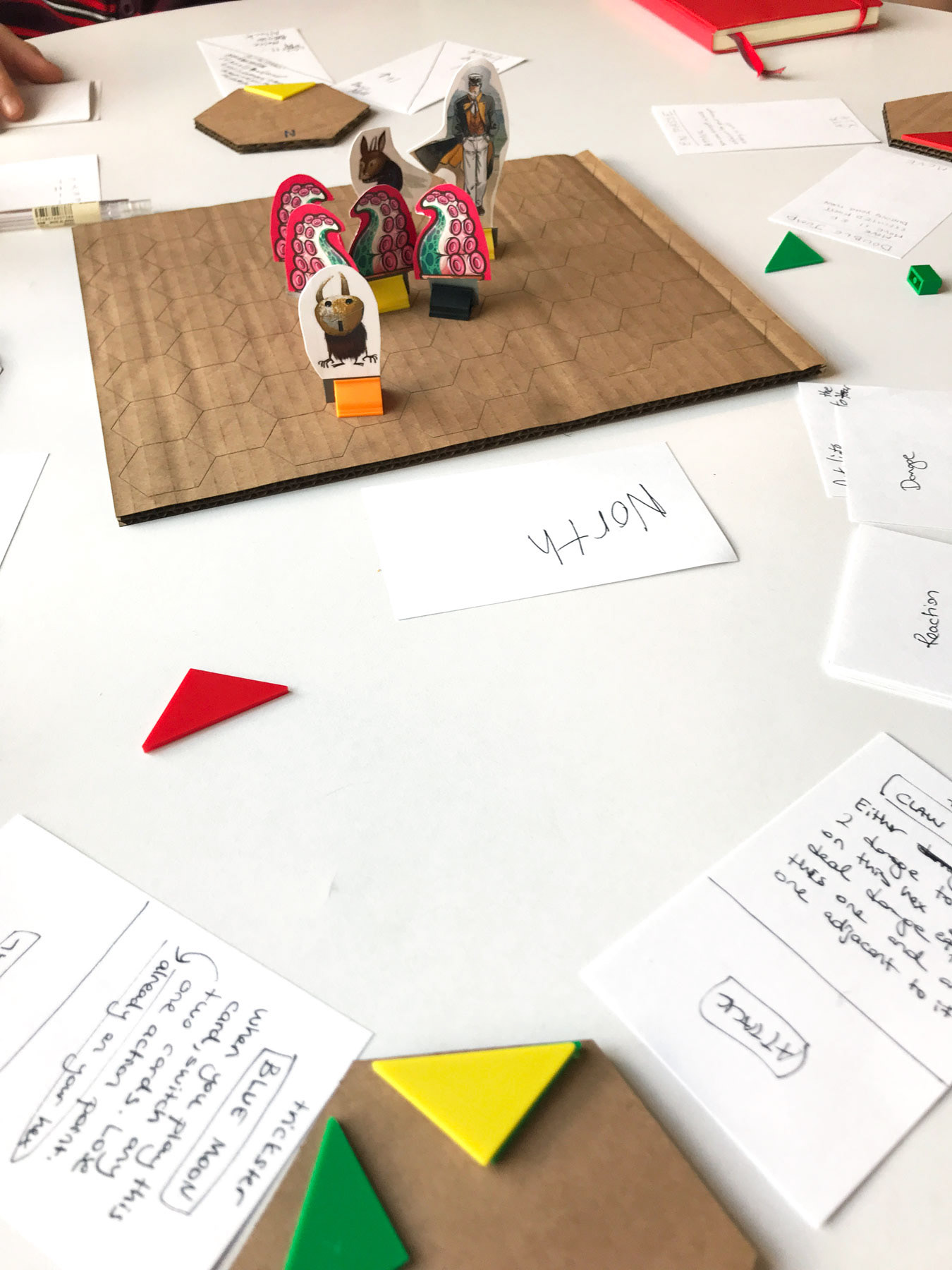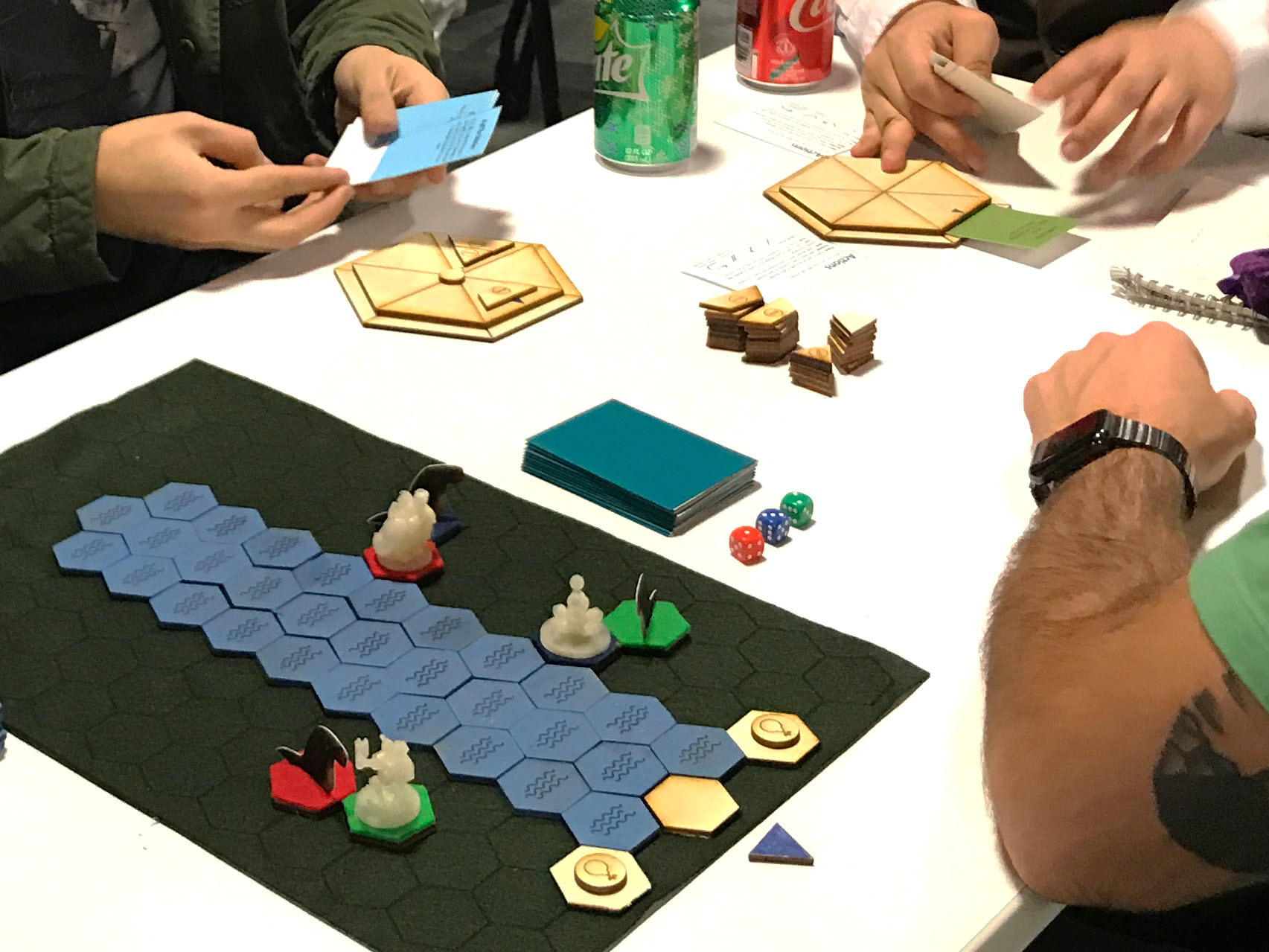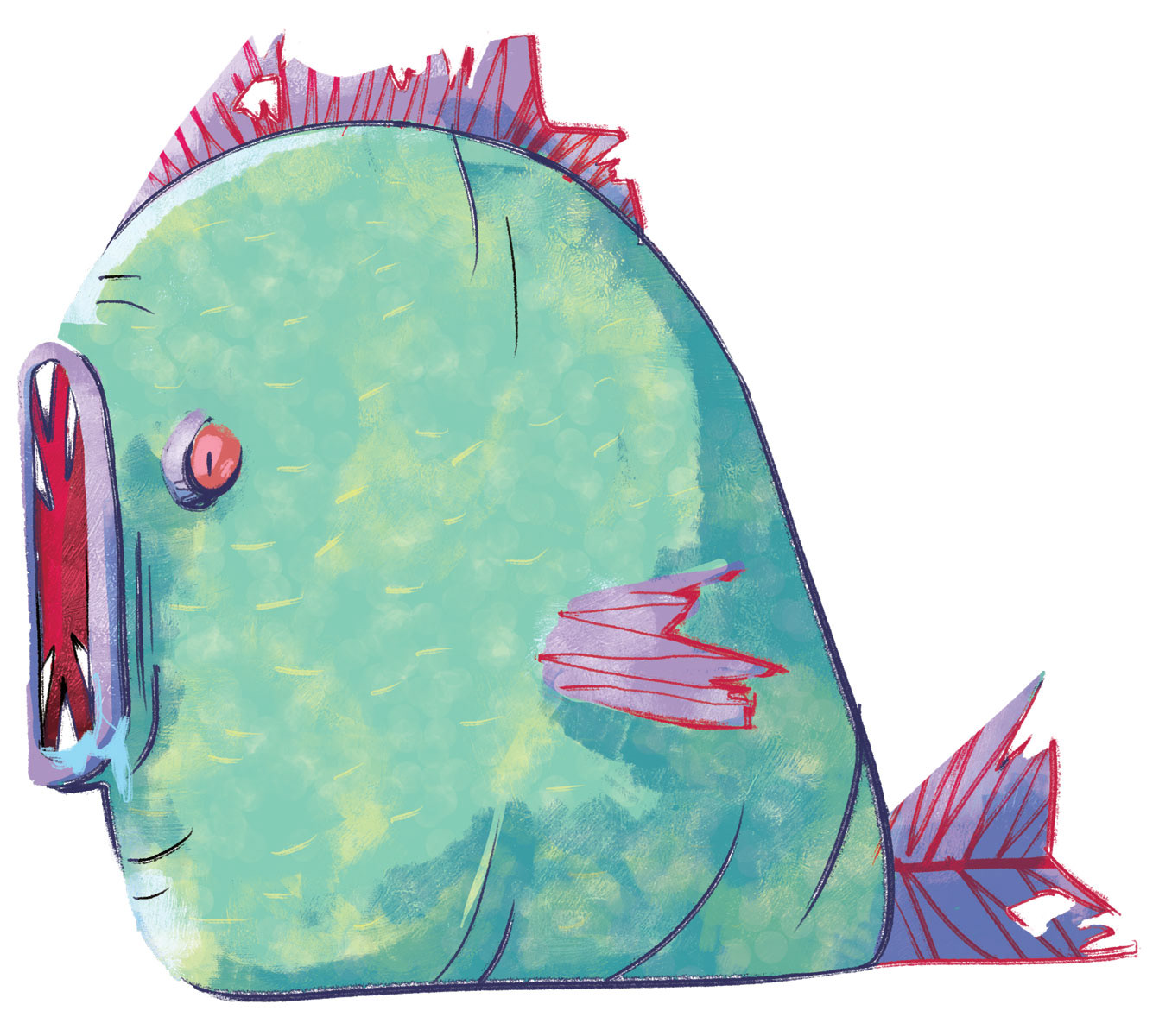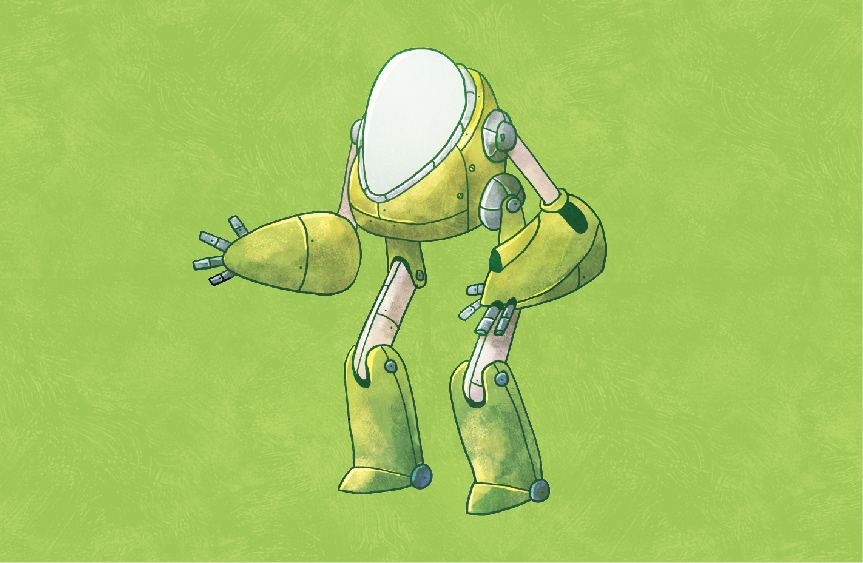Gearhearts is a co-operative, tactical board game in which players take on the role of pilots who control powerful, but finicky clockwork mechs using a real-world, gear-like mechanism. Developed by myself, Jeff Petriello and Oliver Hong over course of nine months.


What is a Gearheart?
What makes Gearhearts unique and unforgettable is it’s core component – the gearheart. Each player uses their own toy-like gearheart to program their mech. “Programming” the gearheart by inserting and manipulating command cards is both tactically and physically satisfying, and we want players to treasure them, personalize them, and experience them as magical devices that link them to their on-board avatars.
How do they work?
These Gearhearts, like the ancient mech technology they control, are finicky. The programs they hold are executed in the order and direction they are placed, a spiraling call stack beholden to space. Players are limited in how many commands they can place, recoup, or modify per turn, balancing each decision between risk and reward, now and later. The Gearhearts also go through a cyclical arc of building up tension and releasing it as a byproduct of “shifting” or rotating the device to change the direction of commands. This allows mechs to execute particularly impressive feats of movement, combat, or repairing, before taking time to “cool down” and re-engineer their program.
Development
Gearhearts was developed by me and two other co-designers. We had two design goals as we started working together. The first one was to coming up with a unique mechanic and novel gameplay. Our second goal was to make a massively multiplayer legacy board game. As this was way out of scope, we decided to only focus on our first goal.
We decided to focus on our core gameplay and make it really good.
We started by throwing out ideas and immediately came up with the hearth of our core mechanic, which we call now the Gearheart Engine.
We spent almost 7 months just polishing the gameplay mechanic. During this period, we focused on two main components in the game simultaneously. These were:
1. Designing the engine
2. Designing the cards
Designing The Engine
The engines on our initial prototypes had only one layer with 6 sides.
Each player owned their unique decks of command cards. On their turn, players were allowed to do two actions. These include:
- placing a card on the engine
- removing one card from the engine (otherwise they get executed every turn)
- flipping a card upside down, since cards have 2 different actions on each side
- shifting all the cards on the engine of the engine for one slot to the same side.
Later on, we decided that one layer wasn’t enough to do anything on just one turn. We end up adding a second layer to open up more space for action on each side.


However, the gameplay wasn't giving players enough room for building a strategy.
Later during a playtesting, we came up with the idea of resolving actions in a different order. Instead of executing the actions on one the same side of the Gearheart simultaneously, we decided to resolve actions on the top layer first and ones on the bottom layer afterwards going clockwise starting from the North side.
That gave the players a huge amount of flexibility on the scope of actions.
Another problem we had was the shifting mechanic.
It was a useful action and encouraged the players play with their engines. However, we had a static wooden prototype then and shifting all the cards on the engine manually didn’t feel good.
As a result, we decided to design an actual gear-like mechanical engine that allowed players to shift cards on a layer using the engine itself.
Here you see one of our earlier mechanical prototype together with the static wooden prototype.
Players loved the new engine. As a prototype, they fulfilled their goals. And they really change the whole experience for people.
As a result, we wanted to encourage the players to play more with the engine. Therefore, we end up making shifting a free action you could perform before you spend your action points.
Another goal for making this change was to encourage players to design systems around the cards that are already placed on the engine.
They iterate their placements on the engine rather than creating new systems over and over again.
Designing The Cards
We started out by designing really interesting and complex action cards. All the cards had different names and unique actions. Even though it was fun to play with them, that made things really complicated for players.
The engine system is already deep and complex. Having another layer of complexity burnt out the players, and it was discouraging for new players. That’s how we decided to simplify the decks and characters.
We end up making actions that are common to all the characters in the game. These common actions are move, attack, and interact. We also end up making creating character specific actions in order to strengthen the coop aspect of the game.
We end up creating 4 different characters for the players: a Tank, a Repair Bot, a Fast Bot, and a Manipulator. However, the uniqueness of the characters comes from mostly from the card combinations in their decks as opposed to which cards are in their decks. For example, the Tank has better attacks than the rest of the team, and so on.
Art Direction
Besides game design, I was the art director for Gearhearts. I have created a great variety of assets including card designs, character designs, board designs, rulebook and concept art.
Mech Designs
We have four different mechs player can pick. They all have different special abilities. My approach in designing these mechs was to create something players would find adorable and eventually own them like a pet.
Players can play as one of the four different characters. They each have unique abilities and different strong suit. My designs reflect on the characters' strengths. Here are the initial sketches I created:
Before we had a clear direction for the narrative, I explored different directions for our mech designs. They lacked the intention but overall, it was a good thought process.
Enemies
My approach for designing enemies was to create a contrast between them and the mechs. Mechs are adorable, and they are inorganic. Enemies have a looser look in terms of brush strokes, they are organic and they make sense only in their own world.





Setting Exploration
I put some time to explore the environments that we have in the game to help us getting in to the mood and have a better understanding of the setting. We have wetlands, desert areas and stormlands. None of these are final art but more of exploration for art direction.
Player Cards
Each player has a unique Command Deck. Each deck consists of 7 cards.
Action Iconography
Enemy Reference Cards


Action Reference Cards


